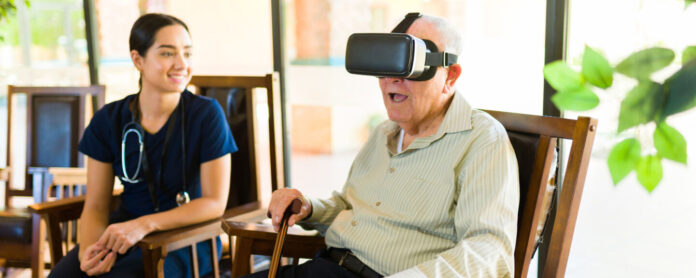As the global elderly population continues to grow, the demand for efficient, compassionate, and advanced care solutions becomes ever more critical. Innovations in technology are transforming senior living and care facilities, providing safer environments and higher quality of life for our aging loved ones. This article explores the cutting-edge technologies that are shaping the future of elderly care, offering insights into how these innovations empower seniors and their caregivers.
Enhancing Safety and Comfort with Smart Home Technologies
One of the primary concerns in elderly care is maintaining the safety and comfort of seniors, especially those who choose to live independently. Smart home technologies have become vital tools in achieving this goal.
Automated Systems: Innovative solutions such as automated lighting, smart thermostats, and voice-activated devices ensure that seniors live in environments that are not only comfortable but also adaptable to their mobility needs and health conditions.
Emergency Response Technologies: Wearable devices equipped with fall detection and emergency call functions can automatically alert caregivers and medical personnel in case of an accident. These devices are crucial for prompt response, potentially saving lives and preventing further health complications.
Remote Monitoring: Advanced camera systems and motion sensors allow family members and caregivers to monitor seniors remotely, ensuring their safety without intruding on their privacy. This technology is especially beneficial for individuals with conditions like dementia, who may require constant supervision.
Telehealth: Bridging the Gap in Healthcare Access
Telehealth has emerged as a game-changer in providing healthcare to seniors, particularly those residing in remote areas or with limited mobility.
Virtual Consultations: Through video calls, seniors can consult with healthcare providers from the comfort of their own homes, reducing the need for stressful and frequent hospital visits.
Health Monitoring Apps: These apps help track vital signs, medication schedules, and other health metrics, which can be shared in real-time with doctors, allowing for timely medical interventions.
Enhanced Communication: Telehealth platforms improve communication channels between patients, healthcare providers, and caregivers, ensuring that everyone involved in the care process is well-informed and engaged.
Cognitive and Social Engagement Through Technology
Maintaining mental and social well-being is as important as physical health. Technological advancements have introduced novel ways to keep seniors cognitively and socially engaged.
Educational and Recreational Apps: Tablets and smartphones are now loaded with apps designed to stimulate cognitive skills through puzzles, games, and learning modules tailored for senior users.
Virtual Reality Experiences: VR technologies can transport seniors to different places and times, allowing them to experience the world from the safety of their facilities. This technology is not only entertaining but also beneficial for those with mobility restrictions.
Social Platforms for Seniors: Dedicated social platforms help seniors connect with peers, family, and friends, combating loneliness and keeping them socially active despite physical distance.
Challenges and Considerations
While the integration of technology in elderly care offers numerous benefits, it also presents challenges that need addressing:
Accessibility and Usability: Ensuring that tech products are user-friendly for seniors, who may not be tech-savvy, is crucial. Training and ongoing support are essential in making these technologies beneficial for the elderly.
Privacy Concerns: As much as technology aids in care, it raises concerns about privacy and data security. Robust security measures and clear privacy policies are necessary to protect sensitive information.
Cost: The cost of implementing cutting-edge technologies can be prohibitive for some seniors and care facilities. Financial assistance or subsidy programs could be vital in making these technologies accessible to all seniors.
Conclusion
Technology holds the key to transforming elderly care, making it more responsive, personalized, and humane. As we continue to integrate these innovations into senior living facilities, it is vital to focus on the needs and limitations of the elderly to ensure that technology truly serves and enhances their lives.





